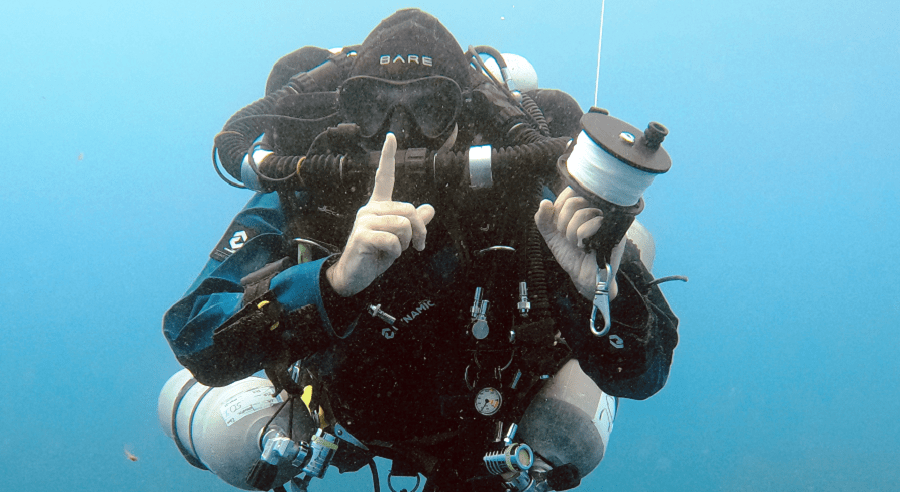
Natalya Afanasyevna Ryabchikova– Doctor of Biological Sciences, human and animal physiology specialty.
It is known that activities that have the goal of foresight, as well as probabilistic forecasting as a foresight higher degree, are considered one of the intellectual foundations. Indeed, if a person predicts well, can foresee future events and his activities results, taking into account the other people’s activities and environmental factors, then he will always be successful in life and solve any problem quickly and efficiently.
You have developed a method for determining the human intellectual capabilities level. On what principles is it based?
Any emergency requires a quick and adequate human response. The one who makes the right decision in a matter of seconds survives, but the one who anticipates these situations and has prepared an action “plan” in advance will win even more.
Good forecasting is the main difference between a commander and a soldier, a country president and an ordinary citizen, a master and a handicraftsman.
A smart person can “sculpt” his future the way he wants to see it. Moreover, he achieves success in the end even making mistakes in any specific actions. However, it is also important that one must be able to process incoming information effectively, cutting off all unnecessary. One with a good memory can get rid of erroneous predictions.
We have accurate quantitative data that make it possible to determine unambiguously the intellectual capabilities of a person unlike the existing psychological testing methods, which are built according to the questionnaires type and give general and not always correct answers only. As they say, we can’t do smarter, but we will teach precise attention, correct thinking, and quickly correct response in extreme situations. And this will allow you to live a better and more interesting life.
Someone grasps quicker, someone slower, and someone cannot understand at all what is at stake. The random events intervention gives a probabilistic character to our plans and forecasts. However, there is some shrewdness in forecasting events: this is the real feasibility of the plan implementation, forecasting, and the effectiveness of the way to implement it.
If achieving a goal requires a huge amount of mental and physical energy, then maybe it’s better to change the goal? A person selects from the environment the necessary information that helps to achieve the goal, skipping everything that is not related to the goal by applying good, correct, rational strategies. The irrational strategy used can “lead” far from achieving the goal or not achieving it at all.
What are the criteria for adequate human behavior?
A person’s adequate behavior is his ability to assess events correctly and respond accordingly in a problem situation. If a person assesses this situation inadequately, then this can lead to negative consequences, both for himself and for his environment.
Persons with difficulties in predicting the upcoming situation cannot be used to perform activities that require special focusing and a high level of abstract-logical thinking, and even more so in extreme situations.
How to distinguish a “good” strategy that guarantees goal achievement?
We identified six strategies only to solve the prognostic problem: three are good, rational and three are bad, irrational.
Rational strategies help to select the right information, for example, by giving priority to input information. The subject manipulates the incoming symbols, determining the order of their alternation in the sequence. Or corrects his prediction by comparing the incoming information about the character alternation patterns with his a priori prediction of their alternation. The subject comes to the correct problem solution in most cases even “pushing” repeatedly his hypothesis about the symbols’ alternation order, giving it preference over the input information. These are all correct strategies.
However, if you change behavior often using different strategies, without completing any of them, then it is impossible to understand the problem structure. Frequent change of strategies is one of the irrational strategies. Indeed, how can we learn anything about the subject content if we are changing the methods of its study constantly? This is the first of the irrational strategies.
Even worse is not thinking about the task at all also. Even if random searching leads to a problem solution then the subject will never learn about it. And, even more, he can not repeat. Problem-solving is almost impossible as a result. This is the second bad strategy.
But the worst option is the third of the irrational strategies: stupid repetition of the same set, not paying attention to the incoming information. This is reproductive behavior. Usually, this behavior is typical for subjects with brain activity abnormalities. Such subjects can even “lose” already familiar solutions to the problem, “forget” effective actions, making a large number of various kinds of mistakes.
How do errors affect the human intellectual capabilities level?
We all make mistakes from time to time. Error is a very informative indicator. The errors number decreases gradually in the learning process as a rule. This is a classic form of learning. Someone makes mistakes when looking for the correct forecast, someone from inattention, and someone just has a bad memory. The measure of the forecasting success is the number of errors made, which determines both the reaction time (forecast) and the use of “good”, rational strategies.
Errors associated with finding a solution to a forecasting problem or forecasting errors are the most numerous as a rule. How can you guess which button to press without any knowledge about the problem solution? It would seem that by chance only. However, you can remember the correct answers and not repeat mistakes by making mistakes deliberately, for example, by pressing the same button deliberately to get information, “shattering” the external environment. A hint is given by presenting the corresponding desired symbol when testing, after pressing the button.
So, a solution is reached quickly by the classical trial and error method. Such errors indicate the voluntary attention poor distribution, i.e. the impossibility to “think” on different topics at the same time, to keep one’s forecasts in memory and compare them with the order of the presented symbols, and to conclude the symbols alternation order also. These errors are the main indicator reflecting the adequate forecast formation, and their number serves as its effectiveness assessment.
However, the subject may make a mistake when presented with the same task again even after solving the prognostic task correctly (for example, three times in a row). This happens in case of unstable attention: one was distracted by some extraneous signal and pressed the wrong button. Although he knew that he had to press another button, but “stepped on the same rake”! Such errors associated with the inability to focus on an event are called “distraction” errors and are a measure of the stability of a person’s voluntary attention. This is the second important prognostic activity indicator.
Subjects with poor attention and its switching cannot work in responsible positions related to other people’s lives saving and important social problems solving. How do you rate attention?
The attention selectivity depends on the regulatory influences of the frontal cortex on the diffuse and local activation levels from the subcortical structures. To put it simply, we turn on consciousness by a willing effort, forcing ourselves to “disengage” from seemingly tempting and interesting events somewhere around the corner. By getting the grip of ourselves, we “crush” the desire to get away from achieving this goal, replacing it with something else (we slow down the subconscious).
This group includes subjects who “switch” voluntary attention poorly, who do not have lability in behavior. For example, when the situation changes and it is necessary to make a decision quickly, but with a different condition, the subjects cannot “disengage” from the previous option and continue to repeat the same actions “by inertia”.
The pilot has three seconds only to make the right decision in case of an accident, the driver will not be able to quickly “switch” to another traffic light and run into a pedestrian, the surgeon may cut off something necessary inadvertently, etc.
It happens that even after solving the problem correctly, the subject cannot then remember: what happened at the beginning. Can’t remember how he solved the problem and that’s it! The subject makes mistakes when reproducing even an already solved problem.
This indicates a poor memory, the irretention of the necessary information amount. Such errors lead often to the need to solve the same problem again as a new one. On one hand, the lack of memorization and information storage in the short-term memory register and on the other hand the information retrieval from long-term memory indicates the violation of the mechanisms for “reading” information from memory.
The above errors are associated with immediate memory weakness also. Events seem to slip by, leaving no trace in the person’s mind. This is another important indicator of forecasting performance.
A person can predict well, but have a poor memory and not reproduce an already known solution. He can make many mistakes at first, and then not make any at all. He can change the strategy if it does not lead to success, but not often, but reasonably. Thus, different “good” and “bad” forecasting combinations are possible. There are four such combinations only and they are called types of predictive activity. Each type can include subjects with varying degrees of forecasting efficiency: both predicting adequately and those with forecasting difficulties. So, four forecasting types only provide a wide variety of human behavior.
As can be seen from the description, two types of strategies only are characterized by good forecasting. These are strategies of input information priority and a priori prediction comparison with the real sequence.
Where can this method of determining the human intellectual abilities level be used?
Well, firstly: determining the intellectual capabilities level allows a person to choose the right profession according to his predictive activity type. Test results should be taken into account also when selecting a responsible position. One can’t demand the impossible from a person, but at the same time, it is necessary to exclude the danger to life, both for the person himself and his environment.
Ranking individuals according to the prognostic activity effectiveness, predicting adequately and with difficulties in predicting, as well as according to the prognostic activity type, allows us to assess the level of mental functions (memory, thinking, attention). At the same time, it is possible to study the very process of probabilistic forecasting, which depends largely on the human behavior regulation and trace formation (memory) by the brain, which allows you to determine ultimately the way to choose the correct solution only to the prognostic problem under constantly changing environmental conditions.
Ultimately, it is possible to predict with a sufficient degree of probability a person’s behavior in various problem situations that require an immediate and adequate response having objective and specific data on a person’s prognostic activity obtained as a result of testing.
This is important because it expands the study boundaries of various aspects of intellectual activity and the mechanisms of their brain support. More simply, knowledge of the laws by which the human brain regulates behavior allows you to control its work and predict its behavior in any situation.
Interview: Ivan Stepanyan










